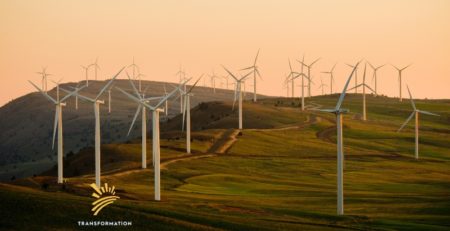Exploring Opportunities in Alternative Energy Sources
It’s not possible to discuss climate change without highlighting alternative energy sources. A large amount of greenhouse gasses that deplete the ozone layer and form a blanket in the atmosphere is caused by burning fossil fuels to produce energy.
This blanket is responsible for the rise in temperature and other climate changes, such as rising sea levels, flooding, and extended periods of famine. Research shows that burning oil, natural gas, and coal contributes to 75% of global greenhouse gas emissions. This is equivalent to 90% of the global CO2 emissions and is enough reason to embrace green energy.
Renewable energy sources are more readily available than non-renewable energy sources. Governments have started investing in alternative energy projects such as solar energy, solar power, and wind energy farms to reduce overreliance on fuel and other non-renewable energy sources.
80% of global energy is produced from fossil fuels. Only 29% of electricity is from renewable sources. More needs to be done to increase the exploitation of renewable and eco-friendly energy sources.
Here is an overview of why shifting to clean energy is our best bet for a healthy planet that’s conducive to cleaner energy for plants and animals alike and the opportunities it offers.
Renewable Sources Are in Plenty
It’s estimated that 6 billion people rely on fossil fuels. This statistic explains the increase in carbon dioxide and greenhouse gases in the atmosphere despite efforts by governments to reverse the trend.
Contrary to popular belief, renewable energy sources are in plenty and all around us. Unlike fossil fuels only found in some countries, renewable energy sources are found in all countries. They are just waiting to be harnessed and used as electrical power to make the world a better place for the current and future generations.
Transitioning to renewable energy sources will make countries green and create new jobs. It will also lower fossil fuel imports, thus providing enough funds for other developments. Ultimately, the transition will create new jobs, spur economic growth, and fight poverty.
One of the milestones set by the International Renewable Energy Agency (IRENA) is to produce 90% of global electricity from renewable energy sources by 2050.
Green Energy is Cheaper
Renewable energy is cheaper than non-renewable energy. In the last decade, the cost of renewable energy dropped by 85%. For example, offshore and onshore wind energy costs decreased by 48% and 56%, respectively.
The low prices make renewable energy an ideal choice for millions of people across the globe, especially in developing countries. It’s possible to implement a new power supply chain through collaboration between the government, non-governmental organizations, and other interested parties in the next couple of years.
Cheap electricity from sources such as solar and wind has the potential to provide 65% of global electricity by 2030.
Even though the cost of wind and power energy is expected to remain high due to high freight and equipment prices after the Covid-19 pandemic, they are not comparable to the current volatile gas and coal prices.
Green Energy is Healthier
Air pollution is one of the leading causes of respiratory diseases and cancers across the globe. A recent World Health Organization (WHO) report revealed that 99% of the world’s population breathes contaminated air. 13 million deaths are directly or indirectly caused by air pollution.
A report published in 2018 showed that fossil fuel-burning air pollution resulted in $2.9 trillion in health and economic costs. It’s possible to reverse this trend by switching to renewable energy sources such as solar and wind.
Consequently, embracing and investing in renewable energy will make our planet livable and safe for humans and animals and combat climate change.
Green Energy Creates Jobs
Unemployment is a major problem in developing countries such as South Africa, Kenya, and Nigeria.
Analysis shows that a $1 investment in renewable energy projects creates 3X more jobs than the fossil fuel industry. Transitioning to renewable energy sources will create more jobs in the energy sector. Approximately 5 million jobs in the current fossil fuel production industry will be lost by 2030.
Concisely, clean electricity generation will create 14 million new jobs by 2030. With the manufacturing of energy-efficient appliances and electric vehicles, approximately 30 million jobs will be created in 2030. An increase in green energy consumption will encourage investors to invest in clean energy projects.
Examples of new jobs in the clean energy sector are;
- Greenhouse worker
- Recycling worker
- Environmental technician
- Environmental scientist
- Wind turbine technician
- Urban planner
- Solar installer
- Air quality engineer
- Energy engineer
- Energy manager, and many more.
It’s never been more important than now to consider green energy in order to tackle climate change. Looking for a new way of using energy can be difficult and costly, but it’s worth the effort considering the long-term financial benefits that playing an active role in reducing our carbon footprint will bring. Investing in renewable energy sources such as solar and wind is a brilliant way to start this journey toward protecting our planet.
Conclusion
Moving away from fossil fuels and investing in alternative energy sources and renewable energy is no longer just beneficial to the environment, but also economically beneficial. Companies have already started making the switch and reaping the rewards associated with their choice; it’s now time for households, companies, and countries alike to do the same! Everyone has an economic stake when it comes to fighting against climate change; therefore, investing in renewable energy offers long-term economic benefits by positively impacting communities’ financial position as well as people’s lives worldwide.
Investing in renewable energy offers long-term economic benefits to developed and developing countries. If the world is to achieve net-zero emissions by 2050, $4 trillion should be invested in green energy every year until 2030. Countries facing financial constraints and technical support should bring on board investors and technocrats to help them actualize renewable energy projects. The future is Green!




Leave a Reply